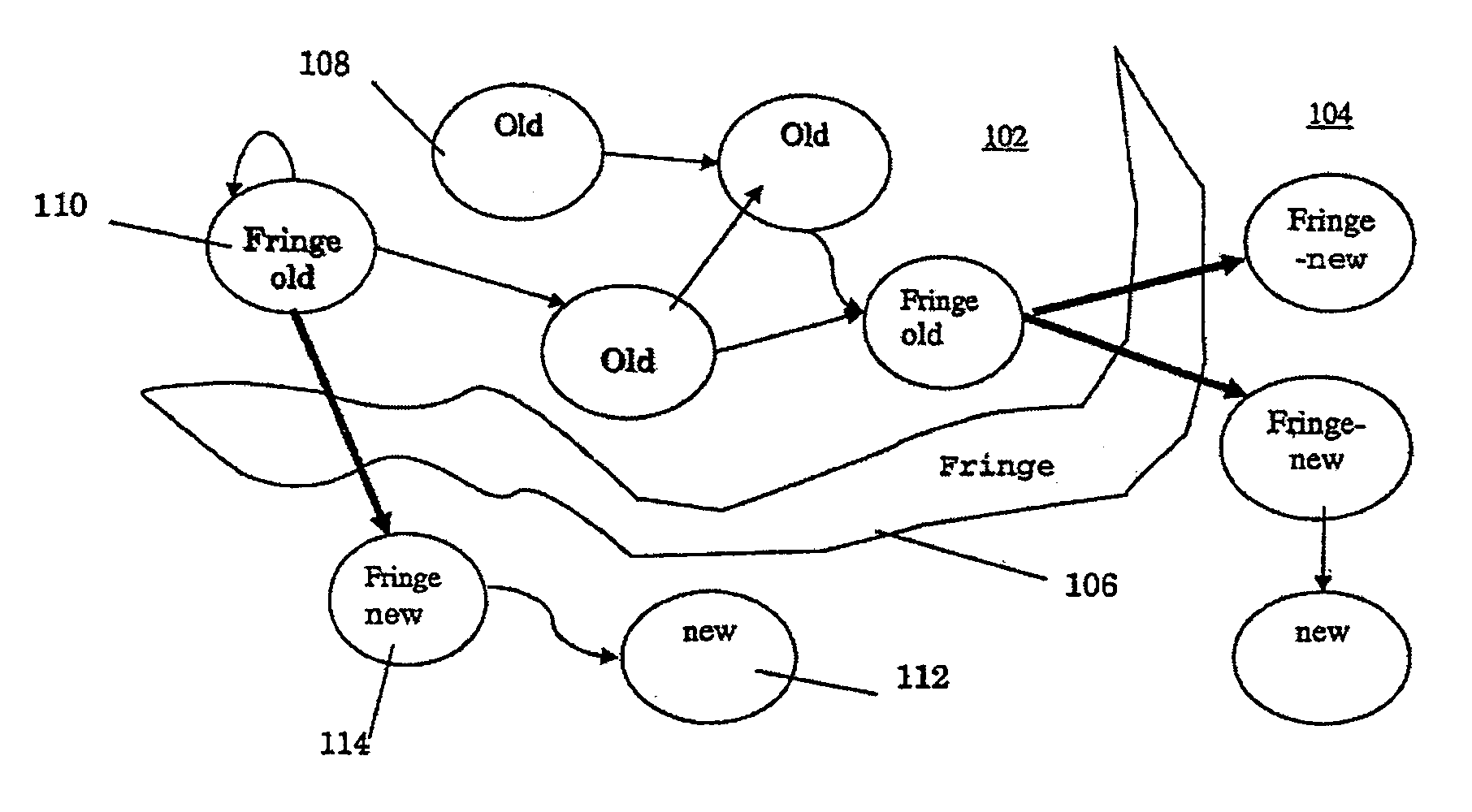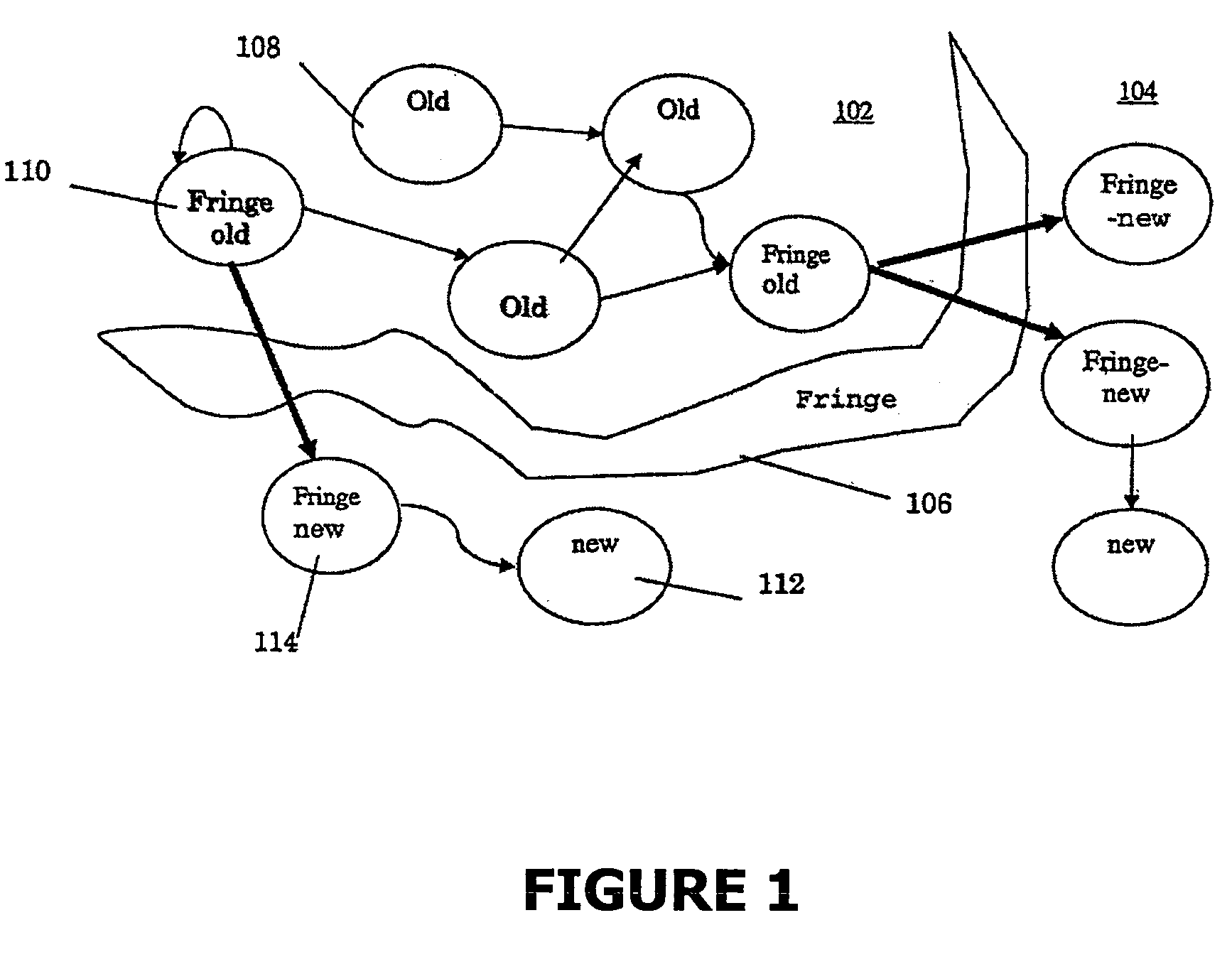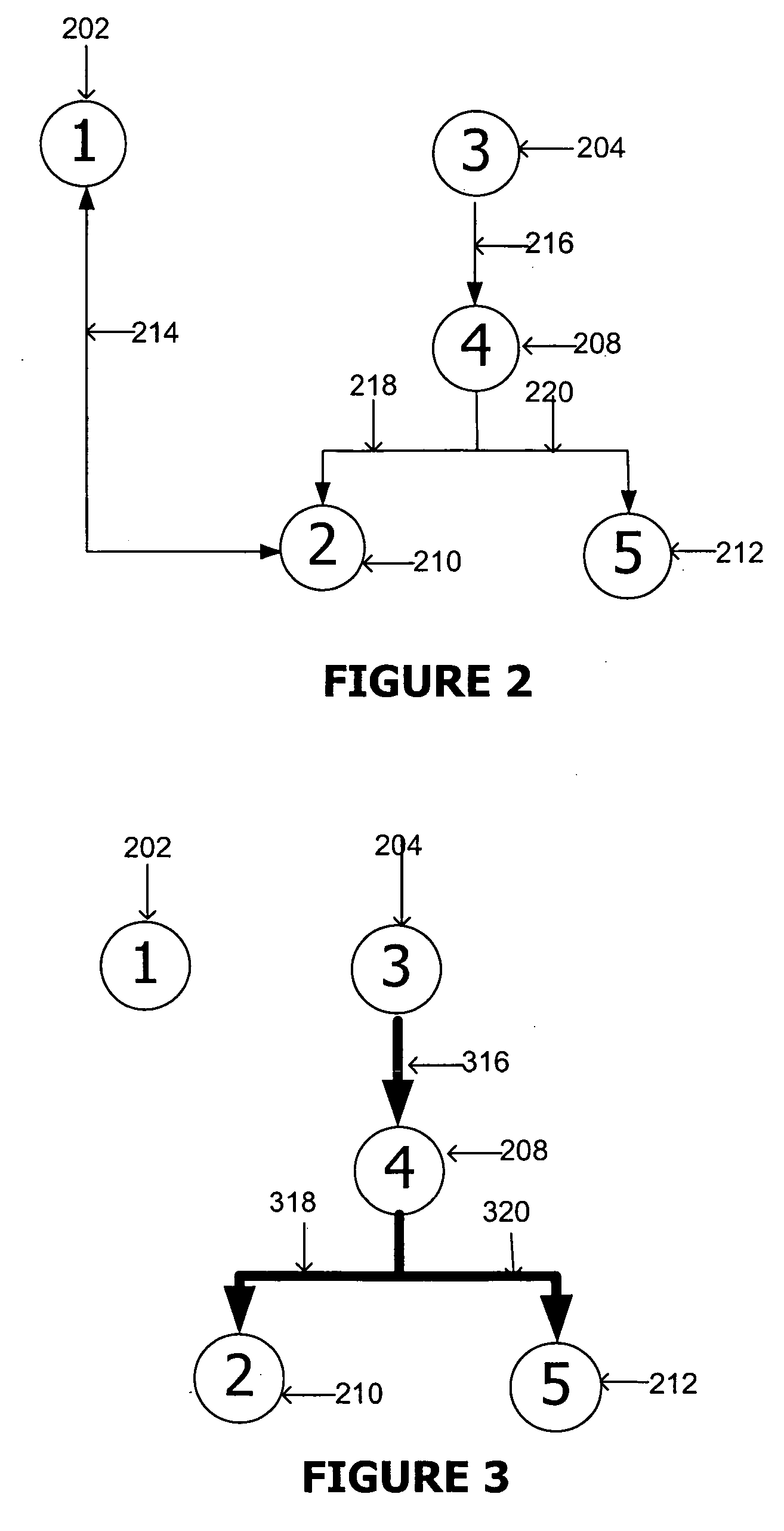Analyzing large amounts of data in a computer system, which by its nature has a limited amount of processing resources available, has long been a challenge in
computer science.
In one particular example, finding a program bug that causes a system to run
out of memory is difficult because performing the analysis requires memory in which to store analytic data and make computations related to the analysis.
Problems such as excessive
memory footprint or unbounded memory growth over time are common causes of system slowdown and failure.
For large-scale systems, understanding the behavior of a program's memory usage over time, and finding the
root cause of memory allocation problems, may be difficult with currently available techniques.
Such a program, running long enough, will eventually consume all the memory of the system, causing the system to fail.
This problem may occur in programs written in any
computer programming language, but is particularly described herein in terms of the
Java programming language, by way of example.
During operation of a computer, objects are continually created, used and become obsolete.
As
computer memory is generally limited, resources assigned to obsolete objects (objects no longer required by any other existing object) must be collected and returned to the system for reuse.
Unlimited object generation and / or growth without object destruction obviously leads to an unsustainable system.
Furthermore,
programming errors, program design flaws, use of libraries and frameworks, program complexity, multitasking and other factors contribute to the inevitable problem in large and complex programs of “memory leaks,” i.e., unintentional and unconstrained growth of the memory resources allocated to a program.
Memory leaks lead to poor performance and often to program “crashes.”
A
memory leak occurs in a
Java program when the program inadvertently maintains references to objects that are no longer needed, preventing the garbage collector from reclaiming that memory.
Memory leak problems are easy to spot, but are often difficult to solve.
When each round of
garbage collection frees less and less memory space, until the application grinds to a halt for lack of memory, a
memory leak is the likely culprit.
Understanding the graphs and seeing patterns in the graphs can lead a
programmer to the particular error in a
computer program which is causing the memory leak.
Unfortunately, the number of objects and size of the
resultant graphs makes it prohibitive to interpret these graphs manually.
Aspects of the
programming language, particularly Java, may also complicate the problem of memory leak analysis.
However, these techniques are not adequate for large-scale, enterprise applications because of the amount of memory resources required to hold multiple snapshots of the memory heap.
This manual method of leak analysis is time-consuming and difficult to implement.
Finding the best data structures on which to focus is difficult.
As discussed herein, when exploring reference graphs (representing currently “live” objects and their references) of large application programs, issues of
noise, complexity, and scale make this a daunting task.
In general, these approaches
swamp the
programmer with too much low-level detail about individual objects, and leave the
programmer with the difficult task of interpreting detailed information in complex reference graphs or allocation paths in order to understand the larger context.
This
interpretation process requires a lot of expertise and many hours of analysis in order to identify the actual object which is causing a memory leak.
Moreover, these techniques may perturb the application program so much as to be of little practical value, especially in production environments, making them inadequate for
memory leak detection in enterprise systems.
Many application programs have properties, common to many Java applications, which make memory leak diagnosis especially difficult.
Server-side e-business applications make use of particularly large frameworks, and introduce additional analysis difficulties due to their high degree of
concurrency, scale, and long-running nature.
In addition, presented with the context of low-level leaking objects, the programmer analyst may easily get lost trying to identify a source of the leak.
Without knowledge of the implementation of the DOM framework, it is difficult to know which paths in the reference graph to follow, or, when analyzing allocation call paths, which call site is important to the memory leak analysis.
When studying graphs with a very large number of nodes and edges, issues of
scalability may not be ignored.
This number may be further restricted by the space required for the analysis itself, and the overhead requirements that come with analysis environments today (e.g., the
Eclipse integrated
development environment for a large-scale
software project may reach several hundred megabytes).
However, there's another important property of these approaches that works against ultimate
scalability: the extent to which the approach preserves certain topological properties of the initial graphs.
For example, if an analysis needs the identity of nodes or the
reachability or dominance relations to be preserved, then certain of these approaches won't help: aggregation, which maps the nodes and edges to feature vectors (and thereby eliminates the nodes and edges entirely), or compression, which generates new nodes that represent whole sub-graphs in the initial graph.
It is apparent from the discussion above that existing approaches provide little assistance in memory leak analysis.
Existing approaches require that tools or users either model everything in the graph, which doesn't work because resources are constrained, or enforce some fixed summarization policies, which does not provide the flexibility needed to solve such
complex problems.
Programmers must rely on their own often limited knowledge of how applications and frameworks manage data in order to segregate objects by the likelihood of being the source of memory leakage.
 Login to View More
Login to View More  Login to View More
Login to View More 


